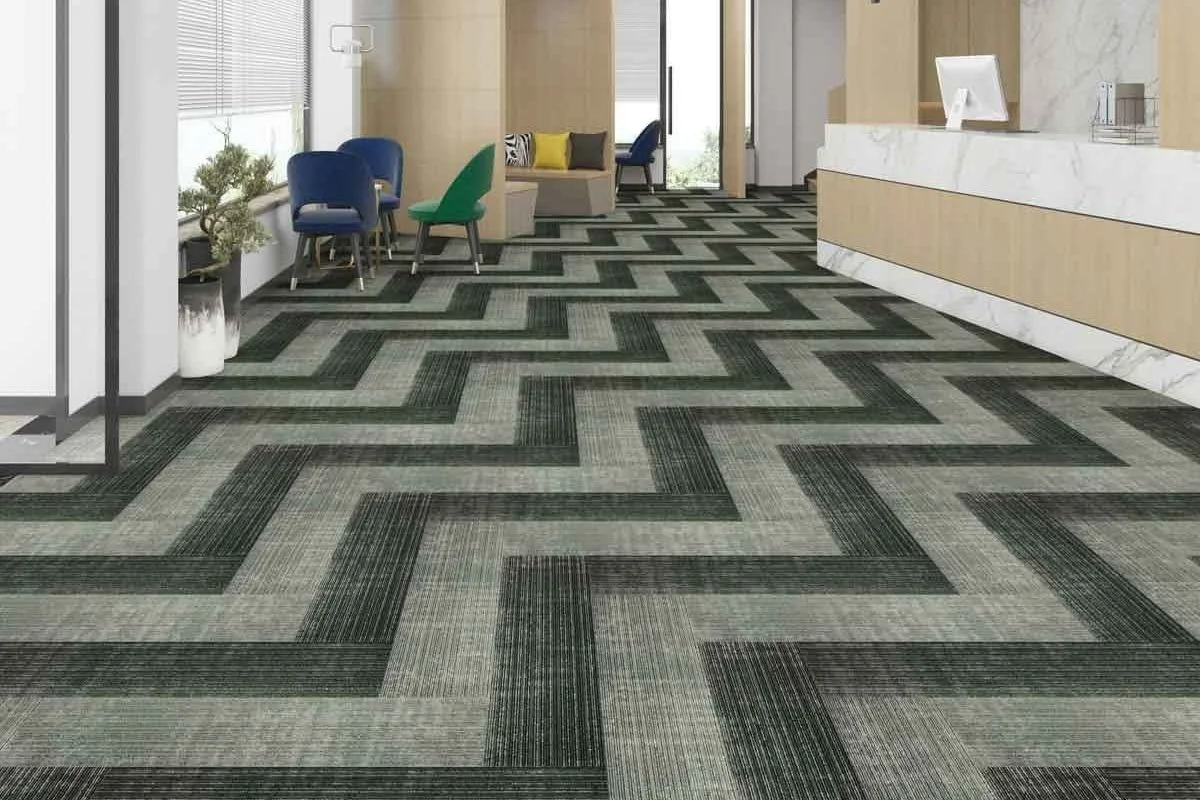When it comes to selecting flooring solutions for office spaces, cost considerations and long-term value are paramount factors that influence decision-making. Office carpet tiles have emerged as a popular choice for businesses seeking a versatile, durable, and cost-effective flooring option. Understanding the financial aspects and long-term benefits of office carpet tiles is essential for making informed decisions that align with budgetary constraints and strategic objectives.
In this article, we delve into the cost considerations associated with office carpet tiles and explore the long-term value they offer to businesses. From initial investment costs to maintenance expenses and durability over time, we analyze the financial implications of choosing office carpet tiles as a flooring solution. Additionally, we examine how office carpet tiles contribute to long-term value through factors such as versatility, sustainability, and adaptability to evolving workplace needs.
Join us as we explore the cost dynamics and long-term value proposition of office carpet tiles, providing insights to help businesses make informed decisions that optimize both financial resources and operational effectiveness in the long run.
Overview of office carpet tiles
An overview of office carpet tiles reveals a versatile and practical flooring solution that has gained popularity in modern work environments. Here are key points highlighting the characteristics and advantages of office carpet tiles:
Versatility: Office carpet tiles come in a variety of colors, patterns, and textures, offering endless design possibilities to match different office aesthetics and preferences. They can be arranged in various configurations, from simple monochromatic layouts to intricate designs, allowing for customization and creativity in workspace design.
Modularity: Carpet tiles are modular in nature, meaning they are individually sized and can be installed and replaced easily. This modularity makes them ideal for offices with irregular layouts or areas that require frequent access, as tiles can be removed and replaced without disrupting the entire floor.
Durability: Office carpet tiles are designed to withstand the rigors of daily use in busy work environments. They are manufactured using durable materials that resist wear and tear, stains, and fading, ensuring long-lasting performance and aesthetics even in high-traffic areas.
Ease of Installation: Installing office carpet tiles is simpler and quicker compared to traditional broadloom carpets. Tiles can be laid out in a staggered or monolithic pattern, and adhesive or tackifier can be used to secure them to the subfloor. This streamlined installation process minimizes downtime and disruption to business operations.
Maintenance: Maintaining office carpet tiles is relatively straightforward. Regular vacuuming and spot cleaning help keep tiles clean and free from debris and spills. In the event of damage or staining, individual tiles can be replaced without the need for extensive repairs or replacement of the entire floor.
Acoustic Properties: Carpet tiles contribute to sound absorption and noise reduction in office environments, creating a quieter and more comfortable workspace. They help minimize echoing and reverberation, improving speech intelligibility and reducing distractions caused by noise.
Sustainability: Many office carpet tiles are manufactured using sustainable materials and production processes. Some tiles are made from recycled materials or are recyclable themselves, reducing environmental impact and contributing to green building initiatives.
Benefits of Office Carpet Tiles
Office carpet tiles offer a plethora of benefits that make them a preferred flooring option for modern workspaces. Here are some of the key advantages of using office carpet tiles:
Versatility: Office carpet tiles come in a wide range of colors, patterns, and textures, allowing for endless design possibilities. They can be mixed and matched to create unique layouts and designs, enabling businesses to customize their workspace to reflect their brand identity and aesthetic preferences.
Modularity: One of the most significant advantages of office carpet tiles is their modular nature. Each tile is individual, making installation, replacement, and maintenance simple and cost-effective. If a tile becomes damaged or stained, it can be easily removed and replaced without disrupting the entire flooring system.
Durability: Office carpet tiles are designed to withstand heavy foot traffic and daily wear and tear in commercial environments. They are manufactured using high-quality materials that resist staining, fading, and crushing, ensuring long-lasting performance and appearance retention.
Acoustic Benefits: Carpet tiles help absorb sound and reduce noise levels in busy office environments. Their soft, absorbent texture helps minimize echoes and reverberations, creating a quieter and more comfortable workspace conducive to productivity and concentration.
Comfort and Safety: The cushioned texture of carpet tiles provides underfoot comfort, reducing fatigue and strain for employees who spend long hours standing or walking. Additionally, carpet tiles offer slip resistance, enhancing safety and minimizing the risk of slips, trips, and falls in the workplace.
Ease of Maintenance: Maintaining office carpet tiles is relatively straightforward. Regular vacuuming and spot cleaning help keep the tiles clean and free from debris and spills. In the event of a more significant stain or damage, individual tiles can be replaced without the need for extensive repairs or replacement of the entire floor.
Cost-Effectiveness: While the initial cost of office carpet tiles may be higher than other flooring options, their long-term cost-effectiveness makes them a wise investment. The ability to replace individual tiles as needed reduces repair and replacement costs over time, resulting in lower total cost of ownership.
Sustainability: Many office carpet tiles are manufactured using sustainable materials and production processes. Some tiles are made from recycled materials or are recyclable themselves, reducing environmental impact and contributing to green building initiatives.
Sustainability and Environmental Impact of office carpet tiles
The sustainability and environmental impact of office carpet tiles are increasingly important considerations for businesses seeking eco-friendly flooring solutions. Here are key points regarding the sustainability and environmental impact of office carpet tiles:
Material Selection: Many manufacturers offer office carpet tiles made from sustainable materials such as recycled nylon, polyester, or natural fibers like wool. These materials reduce the reliance on virgin resources and help divert waste from landfills, contributing to a more circular and sustainable economy.
Recyclability: Office carpet tiles are often designed to be recyclable at the end of their lifespan. Recycling programs allow used tiles to be reclaimed and processed into new materials, reducing the demand for raw materials and minimizing environmental impact. Some manufacturers even offer take-back programs to facilitate the recycling process.
Low VOC Emissions: Volatile Organic Compounds (VOCs) are harmful chemicals emitted by some flooring materials, contributing to indoor air pollution and potential health risks. Many office carpet tiles are manufactured with low VOC emissions, promoting better indoor air quality and a healthier work environment for occupants.
Energy Efficiency: Sustainable manufacturing processes for office carpet tiles often prioritize energy efficiency and resource conservation. This includes using renewable energy sources, implementing energy-saving technologies, and optimizing production processes to minimize energy consumption and greenhouse gas emissions.
Certifications and Standards: Look for office carpet tiles that meet recognized sustainability certifications and standards, such as LEED (Leadership in Energy and Environmental Design) or Green Label Plus. These certifications ensure that the products have been independently verified to meet stringent environmental performance criteria.
Longevity and Durability: Office carpet tiles are designed to be durable and long-lasting, reducing the need for frequent replacement and minimizing waste generation. Investing in high-quality, durable tiles ensures that they maintain their performance and appearance over time, further enhancing their sustainability credentials.
Life Cycle Assessment: Conducting a life cycle assessment (LCA) helps evaluate the environmental impact of office carpet tiles from raw material extraction to manufacturing, installation, use, and disposal. Assessing the entire life cycle of the product enables businesses to make informed decisions and identify opportunities for improvement in sustainability practices.
Corporate Sustainability Initiatives: Incorporating sustainable flooring options like office carpet tiles aligns with corporate sustainability goals and initiatives. Choosing environmentally responsible products demonstrates a commitment to reducing environmental footprint and promoting sustainable business practices.
Installation and Maintenance Tips of office carpet tile
Installation and maintenance are key aspects of ensuring the longevity and performance of office carpet tiles. Here are some tips for both installation and maintenance:
Installation Tips:
Subfloor Preparation: Ensure that the subfloor is clean, dry, and smooth before installing office carpet tiles. Remove any debris, dust, or adhesive residue that may affect the adhesion of the tiles.
Acclimatization: Allow the carpet tiles to acclimate to the temperature and humidity of the installation environment for at least 24 hours before installation. This helps prevent expansion or contraction of the tiles after installation.
Layout Planning: Plan the layout of the carpet tiles before installation, considering factors such as pattern alignment, traffic flow, and aesthetic preferences. Use chalk lines or grid markers to guide the placement of tiles and ensure uniformity in the layout.
Adhesive Application: Use the appropriate adhesive recommended by the manufacturer for installing carpet tiles. Apply the adhesive evenly to the subfloor using a trowel, ensuring complete coverage and avoiding excessive adhesive buildup.
Tile Installation: Begin installing carpet tiles from the center of the room, working outward toward the walls. Press each tile firmly into place, ensuring proper alignment and tight seams between tiles. Use a roller to compress the tiles and ensure good adhesion to the subfloor.
Trimming and Cutting: Trim or cut carpet tiles as needed to fit around obstacles, corners, and doorways. Use a sharp utility knife and a straight edge for precise cuts, ensuring clean edges and a professional finish.
Maintenance Tips:
Regular Vacuuming: Vacuum office carpet tiles regularly to remove dirt, dust, and debris that accumulate over time. Use a vacuum cleaner with adjustable settings to effectively clean both low and high-pile carpet tiles.
Prompt Stain Removal: Attend to spills and stains immediately to prevent them from setting into the carpet fibers. Blot the stain with a clean cloth or paper towel, then use a mild detergent solution and water to gently blot and clean the affected area.
Spot Cleaning: Use carpet spot cleaners or stain removers designed for use on carpet tiles to treat isolated stains and spots. Test any cleaning solution on a small, inconspicuous area of the carpet first to ensure compatibility and prevent damage.
- Professional Cleaning: Schedule professional carpet cleaning services on a regular basis to deep clean and refresh the office carpet tiles. Professional cleaners use specialized equipment and techniques to remove embedded dirt, stains, and allergens, extending the lifespan of the carpet tiles.
- Preventive Maintenance: Implement preventive maintenance measures such as regular carpet inspections, spot cleaning, and proactive repairs to address minor issues before they escalate. Monitor the condition of the carpet tiles and address any signs of wear, tear, or damage promptly.
By following these installation and maintenance tips, businesses can ensure that their office carpet tiles remain clean, attractive, and functional for years to come, contributing to a comfortable and professional work environment.
Conclusion
In conclusion, proper installation and maintenance of office carpet tiles are essential for preserving their appearance, longevity, and performance in the workplace. By following the recommended tips for installation, including thorough subfloor preparation, careful layout planning, and precise adhesive application, businesses can ensure a professional and durable flooring solution.








